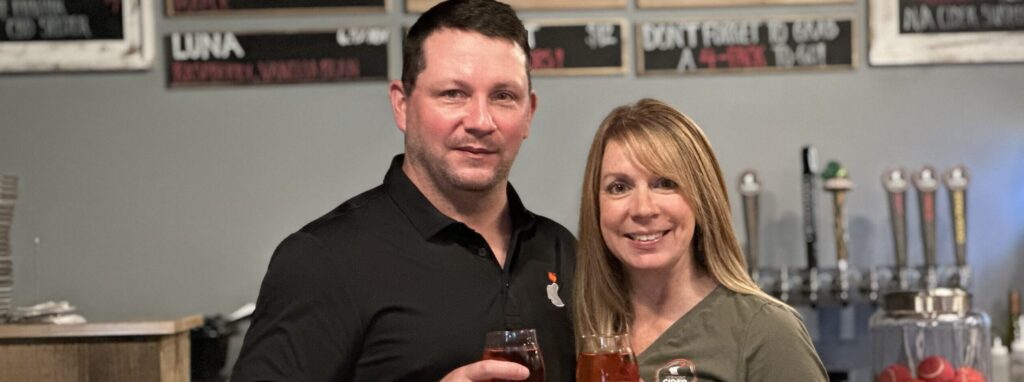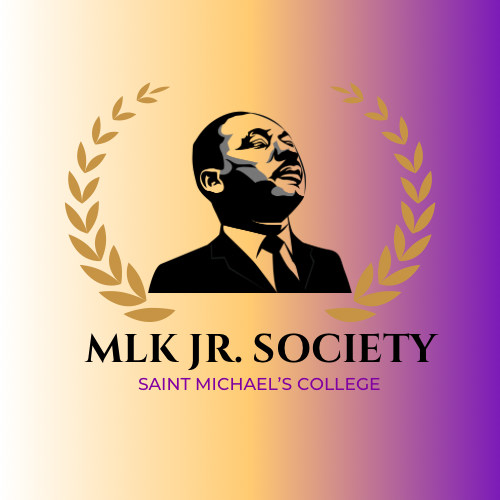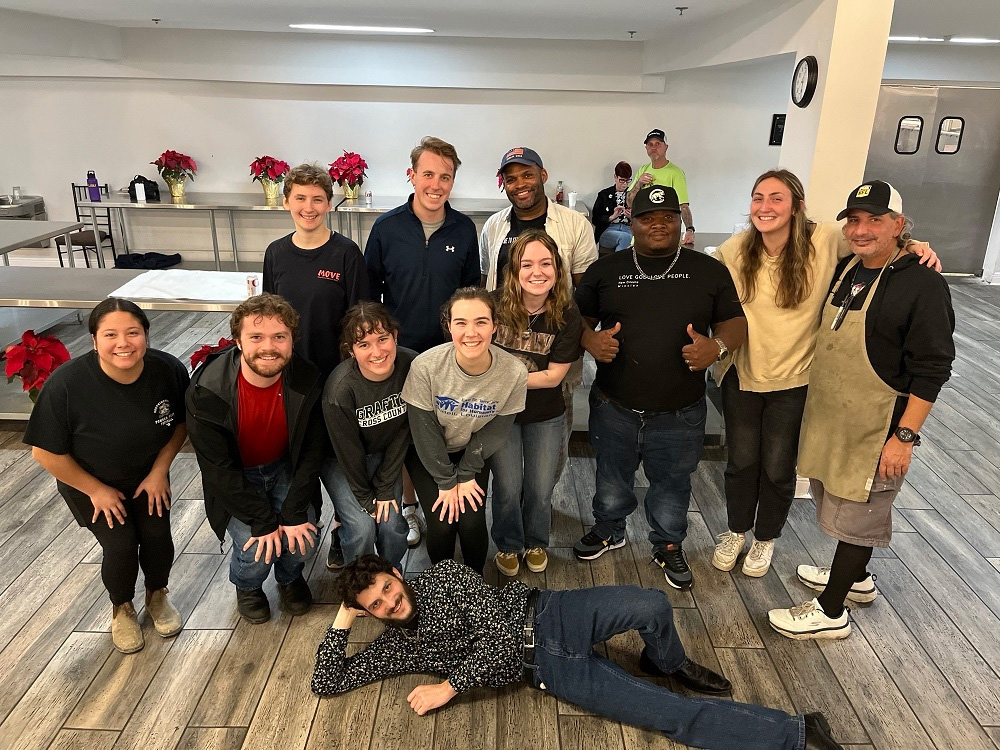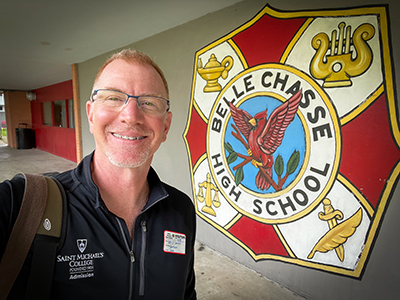Students, instructors loving new Scientific Imaging Facility
Class time was over and nobody was leaving at 4:30 p.m. one day last week in the new Scientific Imaging Facility on the third floor of St. Edmund’s Hall, where Ruth Fabian-Fine of the biology faculty says she had brought her Developmental Biology class so they could take images on a new state-of-the-art microscope, analyze their preparations and document them.
“They’re all involved and really into it – I was happy to see it,” Fabian-Fine told a group of visitors from the Admissions Office, who visited the lab site a few days after that class to admire and learn more about the newest cool think going on for Saint Michael’s College science students.
The recently-opened suite features advanced technology – 10 high-end computer work stations for 20 students, with each station operating scientific imaging and evaluation programs for study and research. The centerpiece is the Zeiss Axiolmager, a $53,000 state-of-the-art microscope with digital image processing abilities, differential interference contrast and fluorescent capabilities. Fabian-Fine demonstrated for visitors how it works, bringing up a vivid colorful fluorescence-enhanced image that appeared on the screen next to the microscope, to some oohhs and aahhs.
Fine explained that the purpose of this facility “is to make such equipment accessible to students and have them learn how to use both the equipment and the computer programs they need in order to take images, process them, evaluate their preparations, get data and make figures.” She realized the need for such a lab and a “proper fluorescent microscope” last summer after her research students were trying to arrive at data they needed “and their computers kept crashing – their laptops didn’t have the capacity or have the programs they needed to run them.”
Now, all students who need it have powerful processing capability at hand in the lab, and everyone can work on similar equipment. Besides Fabian-Fine’s neurosciences and developmental biology classes, Christina Chant of the chemistry faculty told the visitors that she will eventually teach biochemistry using the technology too, as Alayne Schroll in her department is doing this semester in order to visualize proteins. “We’d eventually like physical and general chemistry to use it for calculations that students wouldn’t be able to make otherwise, and I’m going to use it in analytical chemistry since we do a lot of Excel calculations — if we have students who can’t afford laptop with Excel or who have Macs, this makes it not necessary to have.”
Fabian-Fine expanded the point: “It’s frustrating when you try to teach students something and all the programs have different ages and the functions are in different places – everything here is the same, so you show it in front from the teacher’s station and they can all do it and learn it and come back here to work on it.” Students will be trained by Fabian-Fine or Chant and will be able to sign up online and book time in the lab for independent work, as long as the instructors are present.
“In cell division we can actually see where the chromosomes are and can tag it to see what part of the cell cycle it’s in,” she said of one image she showed.
Funds for the facility came from the George I Alden Trust in a competitive grant process, while new furniture in the suite was paid for by the Green-Bean Fund, named for beloved former biology faculty members Doug Green and Dan Bean. The College also contributed to funding the project, which had a total cost of about $150,000 all-told.
Fabian-Fine explained how filters allow microscope viewers essentially to excite molecules by certain wavelengths using fluoresced antibodies so they show up blue, green or red, depending what structure, with each color viewable either separate of all three together. She even has suggested to the College’s Arts Committee that they might have an exhibition showing some of the beautiful images from the new microscope and programs.
Most gratifying is student response, the instructors said. “Yesterday we had the lab time in her for my class and then they come in extra hours beyond that – they’re signing up, and some have signed up weekly to do assignments,” said Fabian-Fine. We hope physics will start to use it, and we really encourage professors to bring this to their students, expose them to this and encourage them to use it.”
The instructors say students seem to get it about sticking to the facility rules to take proper care of so delicate and expensive a machine she said – rules about winding down the microscope after using it, and remembering to use various covers. “You can see the student appreciate that we have it,” she said. “It’s a pleasure to see how they come in here and work independently.”
Chant said she felt that, based on her experience, it is unusual for an undergraduate science program at a College the size of Saint Michael’s to have such equipment available for students to use independently in the way that is happening now.
Said Fabian-Fine, “My goal is that by the time they graduate from here they will be really expert in these things and when they apply somewhere else they can say, ‘I know how to do that.’”





